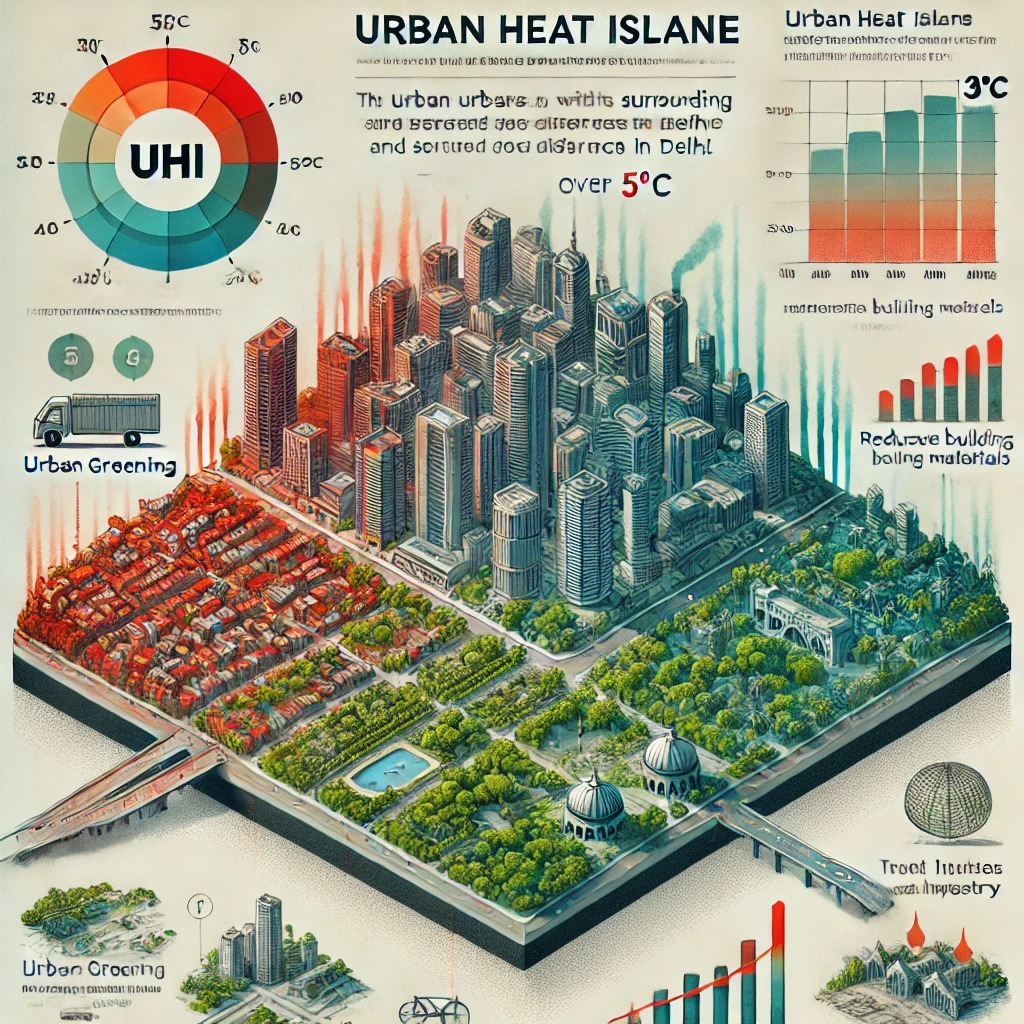Rapid urbanization in Delhi has led to significant environmental challenges, one of which is the Urban Heat Island (UHI) effect. This paper examines the extent, underlying drivers, and consequences of the UHI phenomenon in Delhi by integrating satellite remote sensing data, ground-based meteorological observations, and urban land-use analyses. Our findings reveal that urban areas in Delhi exhibit surface temperature anomalies exceeding 5°C compared to surrounding rural zones. Key contributors include reduced green cover, high building densities, and increased anthropogenic heat emissions. The paper concludes with a discussion on the adverse effects on public health and energy consumption, alongside recommendations for urban planning and mitigation strategies such as urban greening, use of reflective materials, and sustainable development practices.
Keywords: Urban Heat Island, Delhi, Remote Sensing, Urbanization, Mitigation Strategies









